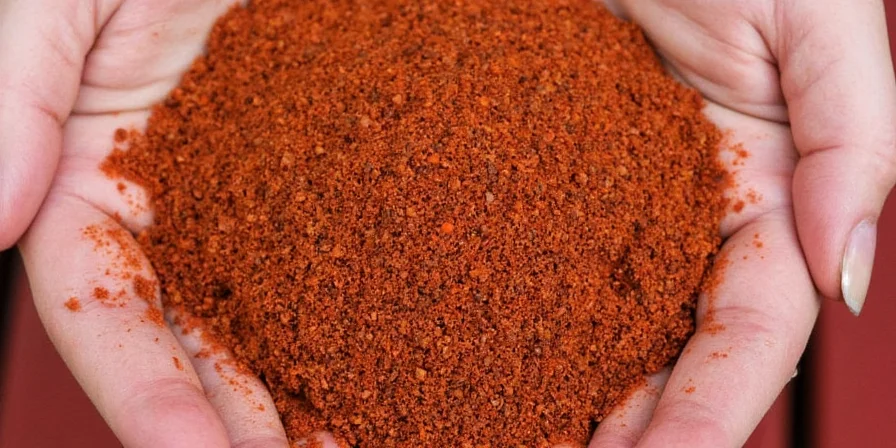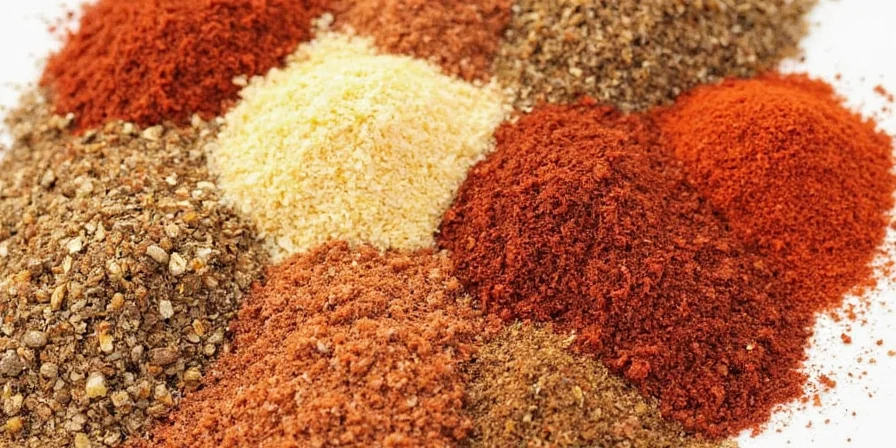Birria Seasoning: A Spicy Journey Through Flavor and Tradition

Get ready to spice up your kitchen with birria seasoning!
Have you ever taken one bite of something and instantly felt like you were transported somewhere else? Maybe a bustling street in Mexico City, the scent of slow-cooked meat filling the air, mingling with smoky chilies and fragrant spices. That’s the magic of birria seasoning.
In this article, we’ll dive deep into what makes birria seasoning so special — from its roots in Mexican culinary tradition to how you can use it creatively in your own kitchen. Whether you're a seasoned chef or a weekend taco warrior, this guide will have you reaching for the chili powder in no time.
Table of Contents
- A Bite of History: The Origins of Birria Seasoning
- The Holy Trinity: Core Ingredients in Birria Seasoning
- DIY Guide: How to Make Your Own Birria Seasoning
- Beyond Tacos: Creative Uses for Birria Seasoning
- Store-Bought vs. Homemade: Which One Wins?
- Pair It Like a Pro: What Goes Well with Birria Seasoning?
- Pro Tips: Mastering the Art of Using Birria Seasoning
- Global Spice Traditions: Where Does Birria Fit In?
- Conclusion: Why Birria Seasoning Deserves a Spot on Your Shelf
A Bite of History: The Origins of Birria Seasoning
Birria is more than just a flavor profile — it's a centuries-old culinary tradition rooted in Jalisco, Mexico. Originally made with goat meat (though beef and lamb are now common), birria was traditionally prepared for celebratory occasions like weddings and festivals. The dish gained international fame thanks to birria tacos, which feature crispy tortillas dipped in consommé made from the birria juices.
Traditionally served at celebrations, birria has become a global phenomenon.
The seasoning used in birria plays a vital role in defining its bold, earthy, and slightly sweet flavor. It’s not just about heat — it’s about balance. Let’s explore what goes into that perfect blend.
The Holy Trinity: Core Ingredients in Birria Seasoning
So, what exactly is in birria seasoning? While recipes vary by region and family tradition, most blends include a mix of dried chilies, aromatics, and warm spices. Here’s a breakdown of the most commonly used ingredients:
- Ancho Chili Powder: Sweet and smoky with mild heat.
- Guajillo Chili Powder: Slightly tangy with moderate heat.
- Pasilla Chili Powder: Dark and rich, often adds depth.
- Cumin: Earthy warmth that ties everything together.
- Oregano (preferably Mexican): More citrusy and floral than Mediterranean varieties.
- Garlic Powder: For that savory umami kick.
- Black Pepper: Enhances the absorption of flavors.
- Salt: Balances bitterness and enhances overall taste.
- Cinnamon (optional): Adds subtle sweetness and complexity.
These ingredients create a layered flavor profile that mimics the richness of long-simmered meats without needing hours in the kitchen. But don’t take our word for it — let’s compare store-bought vs. homemade in a moment.
DIY Guide: How to Make Your Own Birria Seasoning
Ready to make your own custom birria seasoning blend? This simple recipe yields about ½ cup, enough to season 2–3 pounds of meat.
| Ingredient | Quantity | Flavor Contribution |
|---|---|---|
| Ancho Chili Powder | 2 tbsp | Smoky, raisin-like sweetness |
| Guajillo Chili Powder | 2 tbsp | Tangy, medium heat |
| Pasilla Chili Powder | 1 tbsp | Dark chocolate notes, earthiness |
| Cumin | 1 tsp | Earthy warmth |
| Mexican Oregano | 1 tsp | Floral, citrusy lift |
| Garlic Powder | 1 tsp | Umami depth |
| Black Pepper | ½ tsp | Enhances other flavors |
| Salt | 1 tsp | Balance and seasoning |
| Cinnamon (optional) | ¼ tsp | Sweetness, complexity |
Instructions:
- In a small bowl, whisk all ingredients until well combined.
- Store in an airtight container away from direct sunlight.
- Use within 3–4 months for best flavor.
Beyond Tacos: Creative Uses for Birria Seasoning
You might associate birria seasoning exclusively with birria tacos or stewed meats — but why stop there? Here are some inventive ways to use this flavorful blend:
- Birria Popcorn: Sprinkle over freshly popped kernels for a spicy snack.
- Spiced Butter: Mix into softened butter for grilled corn or steak.
- Egg Dishes: Add a pinch to scrambled eggs or shakshuka.
- Vegetable Roasts: Use as a rub for roasted squash, cauliflower, or eggplant.
- Chili or Stews: Stir into any chili, tomato-based soup, or braised beans.
- Pizza Dust: Sprinkle lightly over pizza crust before baking for a spicy twist.
Store-Bought vs. Homemade: Which One Wins?
If you’re short on time or prefer convenience, many brands now offer pre-made birria seasoning. But how do they stack up against making your own? Let’s break it down:
| Aspect | Homemade | Store-Bought |
|---|---|---|
| Flavor Control | Customizable to your palate | Limited adjustability |
| Cost | More affordable long-term | Convenient but often pricier per ounce |
| Ingredients | No additives or preservatives | Sometimes includes fillers or MSG |
| Shelf Life | Lasts ~3–4 months | Can last up to a year unopened |
| Time Required | 5 minutes | 0 minutes |
Ultimately, both options work depending on your needs. If you love experimenting with flavor profiles, go homemade. If speed is key, grab a bottle from the store — just read the label carefully!
Pair It Like a Pro: What Goes Well with Birria Seasoning?
Because of its complex flavor profile — earthy, smoky, mildly sweet — birria seasoning pairs beautifully with certain ingredients. Here’s a quick guide to complementary pairings:
| Category | Birria Pairings |
|---|---|
| Proteins | Beef, lamb, chicken thighs, goat, mushrooms (for plant-based dishes) |
| Veggies | Onions, bell peppers, squash, carrots, tomatoes |
| Grains & Breads | Tortillas, rice, quinoa, flatbreads, bread rolls |
| Dairy & Alternatives | Cheese (especially cotija), sour cream, cashew cream |
| Condiments | Avocado crema, salsa verde, lime crema, pickled jalapeños |
Pro Tips: Mastering the Art of Using Birria Seasoning
- Don’t skimp on oil: When using birria seasoning on meats, rub them with oil first to help the spices adhere better.
- Toasting spices boosts flavor: Lightly toast cumin and oregano in a dry pan before mixing to enhance their aroma.
- Layer it in layers: Use birria seasoning during cooking AND again after for maximum flavor impact.
- Add acid to balance: A splash of lime juice or vinegar can brighten up a heavily spiced dish.
- Test before committing: Taste your seasoning before applying it to large quantities of food — adjust salt or heat level as needed.
Global Spice Traditions: Where Does Birria Fit In?
Birria seasoning sits comfortably among other iconic spice blends around the world. Think of it alongside Indian garam masala, Moroccan ras el hanout, or Jamaican jerk seasoning — each with a unique balance of warmth, heat, and earthiness.
What sets birria apart is its regional specificity and the way it celebrates celebration through flavor. In Global Spice Traditions, birria represents more than food — it’s culture, community, and comfort wrapped in one spicy package.

How does birria seasoning compare globally? Find out here!
Conclusion: Why Birria Seasoning Deserves a Spot on Your Shelf
Birria seasoning isn’t just another spice blend — it’s a passport to bold flavors, cultural heritage, and endless culinary creativity. Whether you're roasting vegetables, grilling meat, or jazzing up popcorn, this versatile blend has got your back.
By making your own or selecting quality store-bought options, you can elevate everyday meals into memorable experiences. So go ahead, sprinkle a little history onto your plate — and enjoy every fiery, smoky, glorious bite.
A final drizzle of birria consommé — because life is too short for bland food.











 浙公网安备
33010002000092号
浙公网安备
33010002000092号 浙B2-20120091-4
浙B2-20120091-4